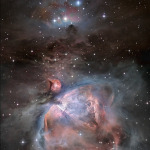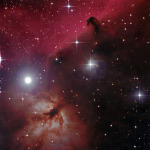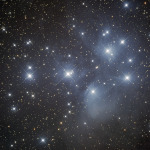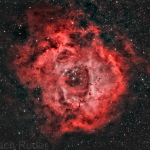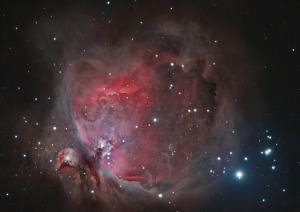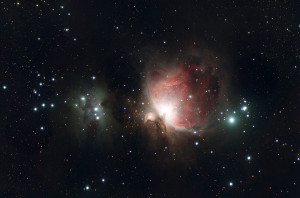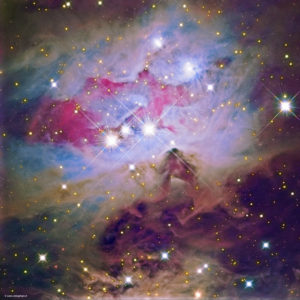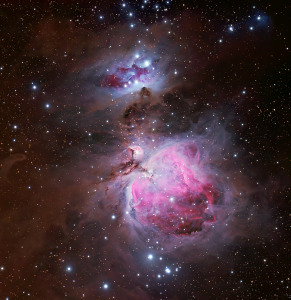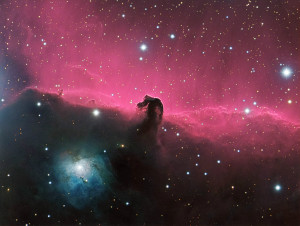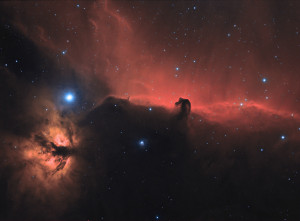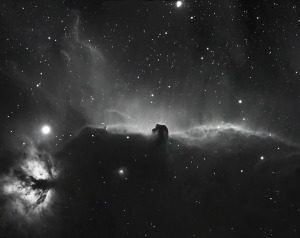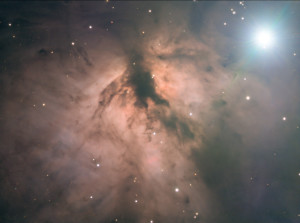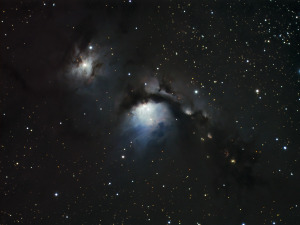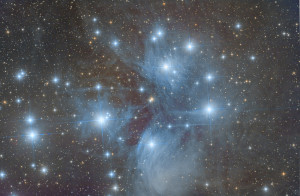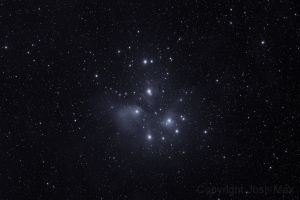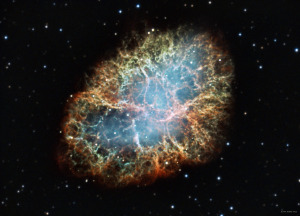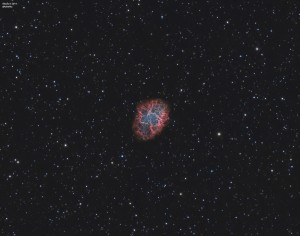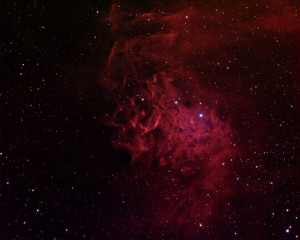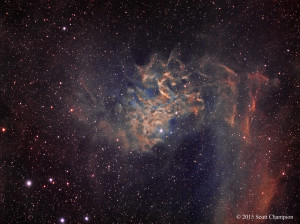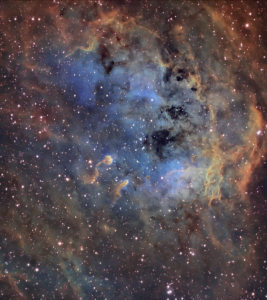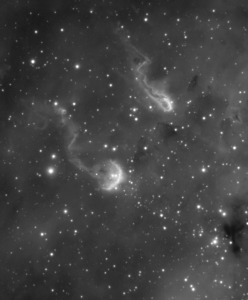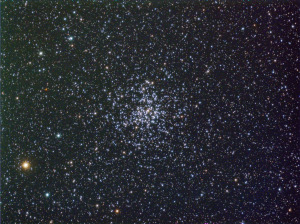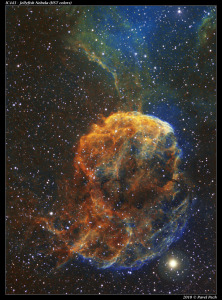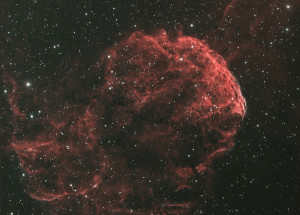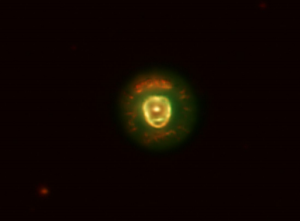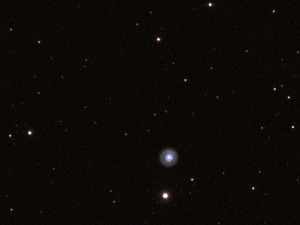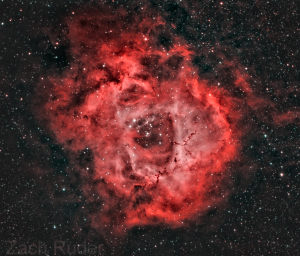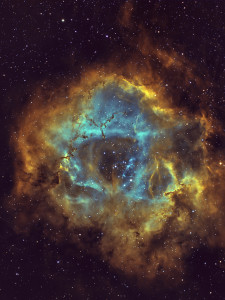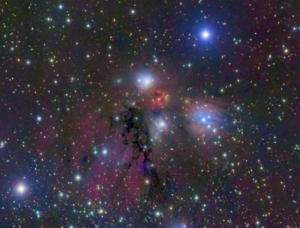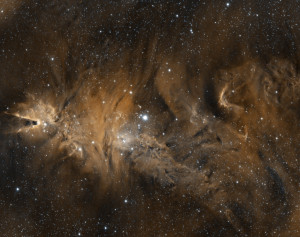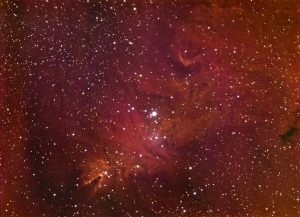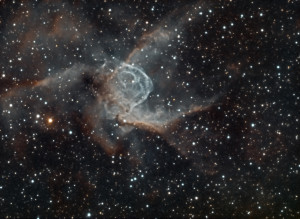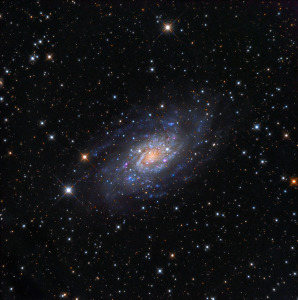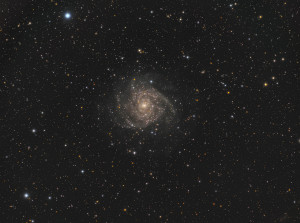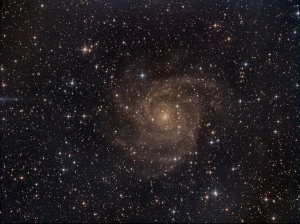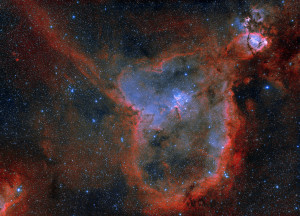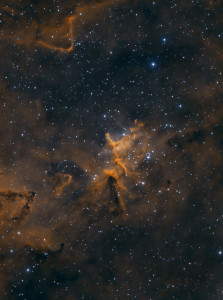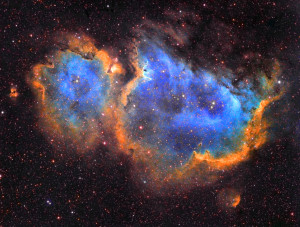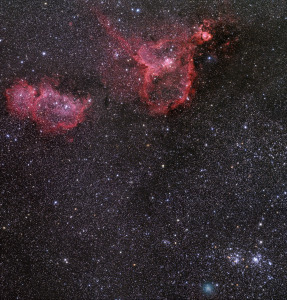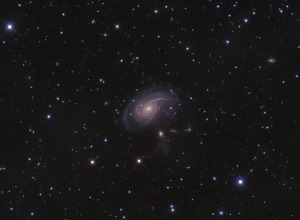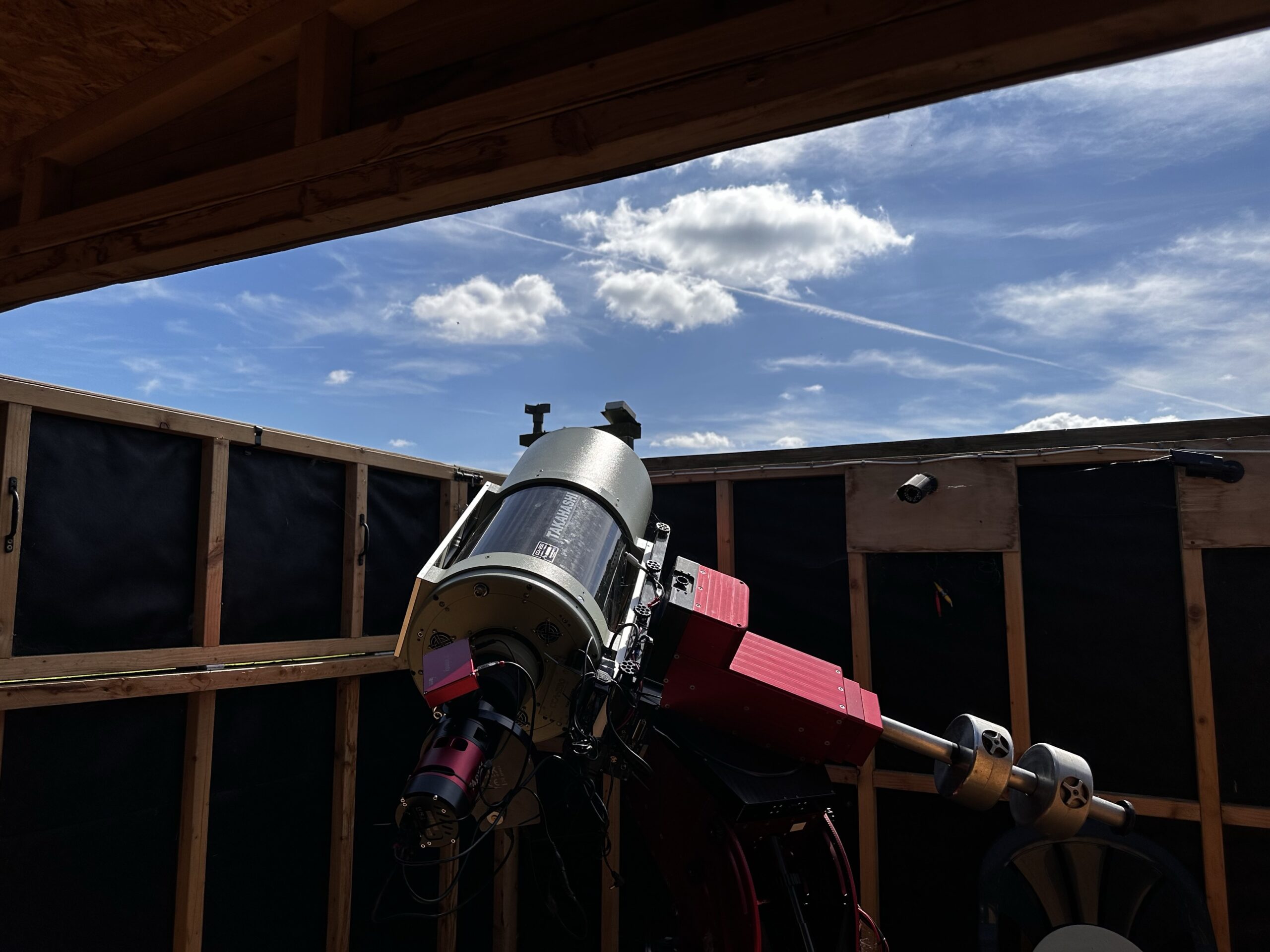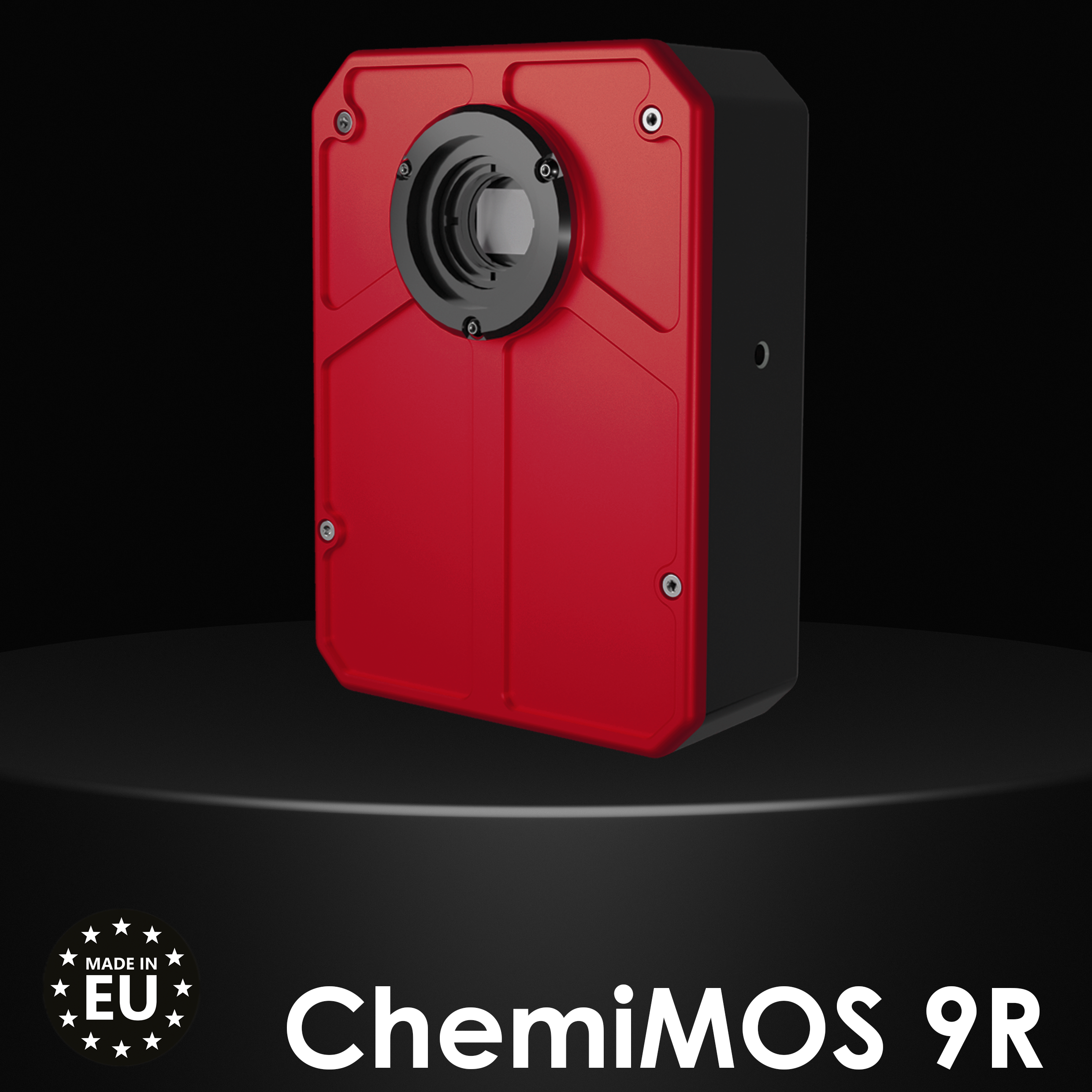22 Objects to Image this Season
We’ve collected some of our favourite winter astrophotography targets to keep you busy this season, with some beginner targets right through to some more challenging objects. They’re arranged by constellation and where better to get started than with the most recognisable constellation in the Winter sky, Orion.
- 2011 – M42 by Michel Lefevre (Atik 16HR)
- IC 434 by Robert Ince
- M45 by Massimo Tosco
- Rosette Nebula by Zach Ruder
Orion
M42 – The Orion Nebula
Mag: 4.5
M42 is an incredibly bright object which can make it a good target for beginners and suitable for a huge range of setups. The real challenge is balancing the incredibly bright core with the surrounding nebulosity and dust. The most common approach to this is to take a variety of short and long exposures that can be carefully combined in post-processing.
Because of its brightness, M42 makes a great target for one-shot colour cameras as well as RGB filters, while narrowband imaging can bring out the finer details in the surrounding nebulosity. Use a short focal length refractor if possible.
- M42 by Francois Megrez Bernier
- M42 and The Running Man by Sungryul Heo
NGC 1973/5/7 – The Running Man
Mag: 7
Often imaged in the same frame as M42 is The Running Man Nebula. At Mag 7 this is a less bright, but incredibly beautiful reflection nebula. LRGB is the way to go, and exposures are best kept short due to the number of bright stars in the field. Combining some Ha data with the red channel may help to highlight the ‘running man’ structure.
- NGC 1977 by Francione Fabrizio
- M42 and the Running Man by Olly Penrice
IC 434 and NGC 2024 – The Horsehead Nebula and The Flame Nebula
Mag: 4.5 and 7.2
IC 434 is another iconic nebula in Orion, with its easily recognisable ‘horsehead’ structure.
As M42 has its bright core, The Horsehead and Flame have Alnitak. This mag 1.8 binary star poses the main challenge when imaging the ‘Horse and Flame’. ‘RGB only’ can be a good approach, and as with M42, you can try combining short and long exposures to handle the star. The region also works well in narrowband, though the reflection nebulae will be far less prominent. Adding Ha data to RGB images will add detail and structure to the nebulosity.
- Horsehead Nebula by Vangelis Souglakos
- Horsehead and Flame by Oliver Pons
- Horsehead and Flame by Franck Malein
- Flame Nebula by Achim Marian Lucian
M78
Mag: 8
Often overlooked in favour of its more famous neighbours, M78 is a striking reflection nebula just 2.5 degrees northeast of Alnitak. It’s a faint and slow target so best imaged using a fast scope from a dark sky site while the moon isn’t around and the weather is on your side – in other words, it’s not an easy one to master. As with most reflection nebula, it’s best to use LRGB.
- M78 by Tom O’Donoghue
Taurus
M45 – Pleiades/The Seven Sisters
Mag: 1.6
The challenge when imaging the Pleiades is balancing the bright stars with the faint surrounding nebulosity. Using only RGB filters or an OSC camera is the best for doing this, and subs should be kept short (under two minutes). A large target, it’s best captured using a short focal length telescope or a camera lens. Some form of haloing around the brighter stars is inevitable but can be kept under control with careful processing.
- M45 by Luca Moretti
- M45 by Josh Max
M1 – The Crab Nebula
Mag: 8.0
As the first object in Messier’s catalogue, who can resist imaging supernova remnant the Crab Nebula. At only 6×4 arcminutes, M1 benefits from longer focal length telescopes, ideally from around 1500mm upwards. It can be successfully imaged using LRGB or a colour camera, but the complex filaments are most prominent when imaging in narrowband. Hydrogen Alpha does the most to capture these structures, but the Crab can also benefit from data using OIII and Hydrogen Beta filters.
- 2013 – M1 by Tim Jardine (ATik 428EX)
- M1 by Álvaro Ibáñez Pérez
Auriga
IC 405 – The Flaming Star Nebula
Mag: 6
Both an emission and reflection nebula, the Flaming Star is best imaged at short focal lengths using LRGB filters. Adding Ha data can bring out greater detail and structure, but the nebula doesn’t image well through other narrowband filters, so you can give the OIII and SII a miss.
- Flaming Star Nebula by Chuck Kozlowski
- Flaming Star Nebula by Scott Champion
IC 410 – The Tadpole Nebula
Mag: 7.8
Located nearby is IC 410, an emission nebula that houses the famous 10 light-year long Tadpoles. Whilst bright enough to be captured using an OSC camera or RGB techniques, this nebula responds well to narrowband, with complex and detailed structures and emissions.
Using a two-panel mosaic, it’s possible to capture both IC 405 and IC 410 in the same frame.
- IC 410 – The Tadpoles – by Anna Morris
- Tadpoles by Eduard Garcia Ribera
M37
Mag: 6.0
The brightest of the open clusters in Auriga, M37 benefits from a wide field of view and is best imaged using short exposures in order to manage the incredible range of colours in the star field.
- M37 by Jim McKay
Gemini
IC 443 – The Jellyfish Nebula
Mag: 12
One of the brightest supernova remnants in the northern sky, the Jellyfish Nebula can be captured with RGB filters and OSC cameras, but responds very well to narrowband imaging.
- Jellyfish Nebula by Pavel Pech
- Jellyfish Nebula by Clarasso Lunette
Abell 21 – The Medusa Nebula
Mag: 15.99
Abell 21 is an incredibly dim planetary nebula, making it one of the more challenging targets on the list and best imaged using narrowband filters. Combining Ha with RGB can also produce well-structured results.
We don’t have any images of the Medusa Nebula in our gallery – get in touch to be the first!
NGC 2392 – The Eskimo Nebula
Mag: 9.2
NGC 2392 is another planetary nebula in Gemini that can be tricky to capture successfully. It’s very small and bright, making it best imaged at longer focal lengths using short subframes to capture the internal structure. The Eskimo works well using LRGB, OSC or narrowband filters, namely NII, Ha and OIII.
- Eskimo Nebula by Steve Chambers
- Eskimo Nebula by Jorma Mantyla
Monoceros
NGC 2237-9, 2244 – The Rosette Nebula
Mag: 4.8
The Rosette is comprised of four different NGCs, as well as open cluster NGC 2244 at its heart. It’s a large nebula so benefits from a large field of view, and its brightness makes it suitable for OSC cameras and RGB imaging. However, using an additional luminance layer or adding Ha and OIII data to an image can bring out additional details in the nebulosity and capture the intricacy of the nebula’s bok globules.
- Rosette Nebula by Zach Ruder
- Rosette Nebula by Manos Malakopoulos
NGC 2170
Mag: n/a
This region contains not only reflection nebula NGC 2170 itself, but also a red emission nebula, dark nebulae and additional reflection nebula NGC 2182. Use as much LRGB data as possible from a dark sky site.
- NGC2170 by Carole Pope
NGC 2264 – The Christmas Tree Cluster and Cone Nebula
Mag: 3.9
Not only the most seasonal target on the list, but also a fantastic patch of sky combining a star-forming region, emission nebula, reflection nebula and second star cluster. Combine Ha data with LRGB for best results.
- Christmas Tree Cluster and Cone Nebula by Chris Heapy
- Cone Nebula by Frederic Jabet
Canis Major
NGC 2359 – Thor’s Helmet
The distinctive shape of this nebula is reminiscent of Norse God Thor’s winged helmet. It can be a challenging target due to its relatively low declination making atmospheric conditions important. It’s also dim and easily masked by light pollution. Traditional LRGB techniques work well. Adding Ha data can bring detail to the faint outer structures, but be careful during processing to ensure the Ha doesn’t overpower other channels. Capture your blue data while the object is nearest the meridian.
- Thor’s Helmet by Cristian Danescu
Camelopardis
NGC 2403
Mag: 8.2
A similar size and brightness to M81, NGC 2403 is best imaged with mid to long focal lengths. Its brightness makes it a good target for OSC cameras or standard LRGB methods. If using a monochrome camera, try adding some Ha to really bring out the jewels in the spiral arms.
- NGC 2403 by Leonardo Orazi
IC 342
Mag: 9.2
Despite its relatively bright magnitude, this spiral galaxy has a low surface brightness and benefits from as much luminance data as possible.
- IC342 by Stephane Zoll
- IC 342 by Oliver Schneider
Cassiopeia
IC 1805 – The Heart Nebula
Mag: 6.5
Although it’s perfectly possible to image the Heart Nebula in RGB, it really benefits from narrowband imaging to bring out the detail and structures within the nebulosity. Deep inside the Heart Nebula is open cluster Melotte 15 with a distinctive pillar of dust. This can be captured using a much tighter field of view than for the whole nebula.
- Heart Nebula by Luca Moretti
- Melotte 15 in the Heart Nebula by Lee Phillips
IC 1848 – The Soul Nebula
Mag: 6.5
Partner to the Heart Nebula is the nearby Soul Nebula, similarly benefitting from narrowband imaging to capture details in the nebulosity.
Using a wide field of view or a mosaic will you allow to capture both nebulae in the same image.
- Soul Nebula by Luca Moretti
- Heart and Soul Nebula with Comet Hartley by Olly Penrice
Eridanus
IC 2118 – The Witch Head Nebula
Mag: 13
The Witch Head is a large object so requires a large field of view. This may be more readily achieved with a camera lens than a telescope. It’s also a dim object and sits low in the sky, meaning any light pollution will make it incredibly difficult to image. Use LRGB for best results and gentle processing to bring out the faint nebulosity.
- The Witch Head Nebula by Chrisoph Kaltseis
Aries
NGC 772 – The Nautilus Galaxy
Mag: 9.9
Despite sitting high in the sky, this peculiar galaxy isn’t one you see imaged too often. Its relatively small size means you can use a longer focal length, and, as with most galaxies, the more luminance data the better. Careful processing is needed to balance the colour and detail in the galaxy with the faint fuzzies in the surrounding region.
- NGC 772 by Angelos Kechagias
Moon Phases
New Moon – 6th January
making the weeks starting the 1st and 8th the best for imaging in January.
New Moon – 4th February
making the weeks starting the 29th Jan and the 5th Feb the best for imaging in February.
Have we missed your favourite winter target off the list? Have some tips for imaging these? Let us know in the comments.

